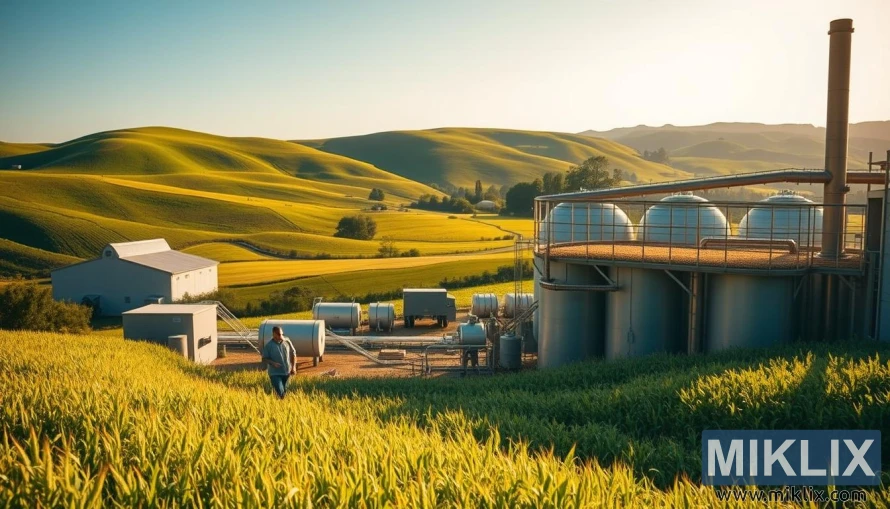Image: Sustainable pale malt facility
Published: July 19, 2025 at 10:02:46 PM UTC
Last updated: September 27, 2025 at 3:25:13 PM UTC
A pale malt production facility blends tradition and eco-friendly innovation, with workers, modern equipment, and rolling green hills under golden sunlight.
Nestled within a serene expanse of rolling green hills, the pale malt production facility stands as a beacon of sustainable innovation and agricultural tradition. The landscape is bathed in the warm, golden light of late afternoon, casting long, gentle shadows across the fields and illuminating the contours of the terrain with a painterly softness. The facility itself blends seamlessly into its surroundings, its low-profile structures and muted tones harmonizing with the natural palette of the countryside. This is not an intrusion into nature, but a partnership—an industrial operation designed with reverence for the land it inhabits.
In the foreground, a field of tall, verdant crops sways gently in the breeze, their stalks thick with ripening barley destined for transformation. A lone worker walks purposefully through the rows, clad in practical attire, their posture attentive and deliberate. This figure embodies the human touch that remains central to the malting process, even in an age of automation. Nearby, open-air drying beds and germination floors are carefully monitored, each batch of barley undergoing its journey from raw grain to malted perfection. The grains are turned and aerated with precision, their progress tracked not just by sensors but by the trained eyes of those who understand the subtle cues of color, texture, and aroma.
The middle ground reveals the facility’s core infrastructure: a series of sleek, cylindrical tanks and interconnected piping systems, all constructed from polished stainless steel. These vessels are part of a modern, energy-efficient setup designed to minimize waste and reduce carbon emissions. Solar panels line the rooftops, angled to capture the maximum amount of sunlight, while heat recovery systems recycle thermal energy from the kilning process. Water used in steeping is filtered and reused, and the spent grain is repurposed as livestock feed or compost, ensuring that every element of production contributes to a closed-loop system. The facility hums with quiet efficiency, its operations guided by a philosophy that values both productivity and environmental stewardship.
Beyond the facility, the landscape opens into a breathtaking panorama of lush vegetation and gently undulating hills. Trees dot the horizon, their leaves shimmering in the golden light, while the sky above stretches wide and clear, a brilliant blue canvas punctuated only by the occasional wisps of cloud. The juxtaposition of industrial precision and natural beauty creates a sense of balance rarely found in manufacturing environments. It is a visual and philosophical statement: that the production of pale malt—a foundational ingredient in countless beer styles—can be both technologically advanced and deeply respectful of the earth.
This scene captures more than just a moment in the life of a malt house. It encapsulates a vision of what sustainable agriculture and responsible brewing can look like when guided by care, knowledge, and innovation. The facility is not merely a place of production; it is a living system, responsive to its environment and committed to preserving it. From the golden grains in the field to the gleaming tanks within, every detail reflects a dedication to quality, sustainability, and the timeless craft of turning barley into malt. It is a portrait of harmony—between man and machine, tradition and progress, nature and industry.
The image is related to: Brewing Beer with Pale Malt

